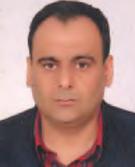Filters
Filters
Found: 28 Piece 0.002 snCollection [1]
Researchers [4]
Faculty / Institute [1]
Publication type [2]
Language [2]
Source [10]
- Applications of Traditional Equestrian Sports in the World 9
- Pakistan Journal of Medical & Health Sciences (PJMHS) 6
- Applications of Traditional Wrestling in The World 4
- Journal of International Social Research / Uluslararası Sosyal Araştırmalar Dergisi 2
- Turkish Studies 2
- European Journal of Physical Education and Sport Science 1
- International Journal of Applied Exercise Physiology (IJAEP) 1
- International Journal of Early Childhood Special Education 1
- International Journal of Life science and Pharma Research (IJLPR) 1
- Вестник МГПУ. Серия: Естественные науки / MCU Journal of Natural Sciences 1 More less
Databases [7]
Index Type [4]
Index Type 2 [1]
Publisher [8]
- Nova Science Publishers 13
- Lahore Medical & Dental College, Lahore 6
- International Balkan University, Makedonia 2
- Anadolu Üniversitesi 1
- Eurasian Exercise and Sport Science Association, Iran 1
- International Journal of Life Science and Pharma Research, Tamilnadu, India. 1
- Open Access Publishing Group, Romania 1
- Московский городской педагогический университет 1 More less
Department [1]
National/International [1]
Subject Headings [20]
- kyrgyz 3
- traditional sports 3
- traditional wrestling 3
- Central Asia 2
- archaic tracks 2
- custom 2
- equestrian culture 2
- equestrian sport 2
- equestrian sports 2
- national huresh 2
- tuvans sports culture 2
- wrestling 2
- Altai turks 1
- Central Asian turkic peoples 1
- Kok-boru 1
- Mongols 1
- Tura 1
- Turkestan 1
- Turkish communities 1
- Turkish peoples 1 More less
 Mehmet TÜRKMEN
Mehmet TÜRKMEN Cengiz BUYAR
Cengiz BUYAR Kanat CANUZAKOV
Kanat CANUZAKOV Ünal TÜRKÇAPAR
Ünal TÜRKÇAPAR
